
The Lunar Landscapes & Lapis Lazuli Lakes Of Band e Amir, Afghanistan
Updated December 2023, The Lunar Landscapes & Lapis Lazuli Lakes of Band e Amir, Afghanistan was originally written in January 2019
The brakes screeched as the Sakhi shifted to a halt. Suddenly, the glimmers of blue began popping through the settling dust around us. We’d made it– these were our first views of Band e Amir. The first lake that comes to sight is the massive Band e Zulfiqar, one of the six lakes that make up Band e Amir.
Note that starting in 2023 the Taliban has been banning foreign women from visiting Band e Amir. Sometimes they have let them visit, other times have refused.
Need Travel Insurance and Evacuation Services for Afghanistan?
Start shopping for travel insurance plans over at IATI Insurance. Readers of the Adventures of Nicole get a 5% discount off your plan.
The Adventures of Nicole partners with Global Rescue to offer the world’s leading medical evacuation and security advisory services. To travel with peace of mind, shop evacuation coverage at Global Rescue.

Band e Amir, Afghanistan’s First National Park
In 2009 Band e Amir would become Afghanistan’s very first national park, soon to be joined by the Wakhan National Park in 2014. Attempts first began in 1973, back when Band e Amir was a popular stop along the Hippie Trail of the ’60s & ’70s by travelers making the journey from Europe to South Asia.
Shortly after political upheaval would take hold and efforts to create Afghanistan’s first national park were shelved for a more prosperous time. Upheaval eventually escalated to full-scale war with the 1979 Soviet Invasion, then later continuing on owing to Iranian and Saudi Arabian meddling.
By the 1990s a civil war would sweep the nation and descend into chaos as the United States and other nations had lost their interests there and the Soviets no longer pushing for the expansion of communist Central Asia.
The Taliban would rise and come to power, controlling most of the land and politics as it fought against Mujahideen groups and warlords vying for power. By the late 90’s Osama bin Laden would be ousted from Sudan and enter onto the Afghan playing field setting up Al Qaeda training camps, some members of which would carry out the September 11th attacks in the United States in 2001.
By October of the same year, the United States would invade Afghanistan, where still today there is a US military presence.
Even after over four decades of fighting, Afghanistan with the help of USAID and the Wildlife Conservation Society pushed forward with the efforts to make Band e Amir Afghanistan’s first national park in 2009. Band e Amir has been added to the UNESCO World Heritage tentative list.
Curious About Afghanistan’s Second National Park? See The Wakhan Corridor In Photos

The Legend Behind The Lakes Of Band e Amir
Much like other sites in Afghanistan, there’s a story behind the creation of the lakes. Band e Amir translates out to the Commander’s (Amir’s) Dam in Dari, the commander in reference is Ali, the 4th Caliph of Islam.
Ali, the son-in-law, and cousin of Mohammed performed a series of miracles to free a local family, resulting in the creation of the six lakes. Ali camouflaged himself as a slave that the father of the family then traded with the king in exchange for the release of his family– avowing that Ali could perform miracles.
Ali’s first task? To stop the flow of a river that raged through the mighty Hindu Kush. This was no small task– it involved his trusty sword named Zulfiqar (and subsequently the name of the largest lake, and also the destroyer of the dragon that tormented the Bamyan residents in another story), a little paneer (paneer is cheese in Dari), some boulders and a little elbow grease… and voila! The 6 lakes of Band e Amir were formed.
Looking for wilder adventures into Bamyan’s mountains? Read about the summit of Shah Foladi
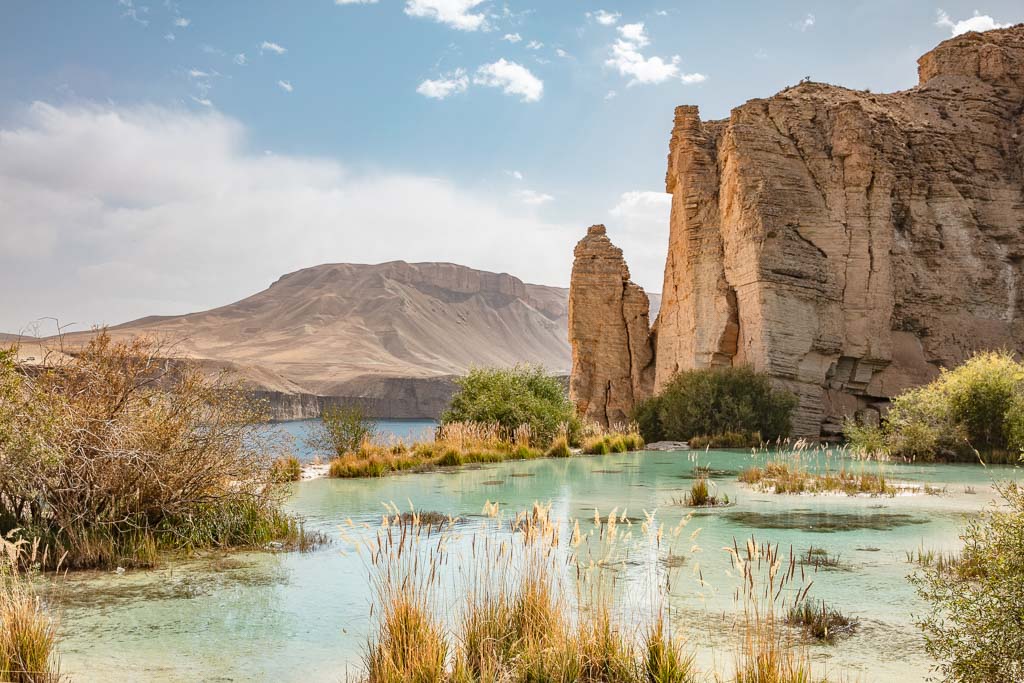
Want To Explore Afghanistan? Check Out The Afghanistan Travel Guide
How The Azure Lakes Of Band e Amir Actually Formed
Miracles aside, there is a scientific explanation of how the six lakes of Amir formed. Travertine dams are what allow for the lakes to exist by obstructing the Balkh River that flows through this valley.
The travertine walls are a precipitate of calcium carbonate created by the carbon dioxide-rich waters that seep out of cracks in the ground below. These precipitates deposit layer after layer, year after year, finally stacking up high enough to create natural dams. The travertine walls actually give the lakes the appearance of being an infinity pool, particularly Band e Haibat. Band e Amir is one of the only natural lake-systems in the world formed by travertine.
Each of the lakes takes on different shades of blue and green ranging from lapis lazuli to aquamarine, turquoise to emerald and sapphire.
Over the years one of the lakes has dried up– Band e Ghulaman. Now leaving Band e Qambar, Band e Haibat, Band e Paneer, Band e Pudina, and Band e Zulfiqar to be explored.
Want to go beyond Bamyan? Read about the remote Daykundi Province
The Band e Amir Lakes
- Band e Ghulaman: Dam of the slave (Ghulaman has sadly dried up)
- Band e Qambar: Dam of Caliph Ali’s slave
- Band e Haibat: Dam of the grandiose
- Band e Paneer: Dam of cheese
- Band e Pudina: Dam of mint
- Band e Zulfiqar: Dam of the Sword of Ali
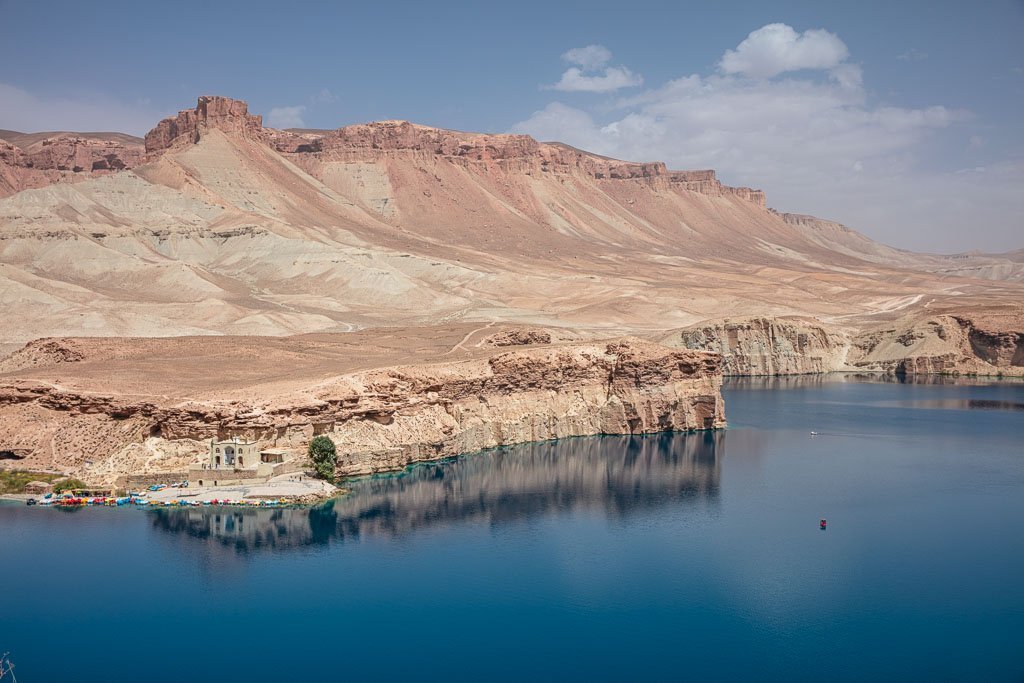
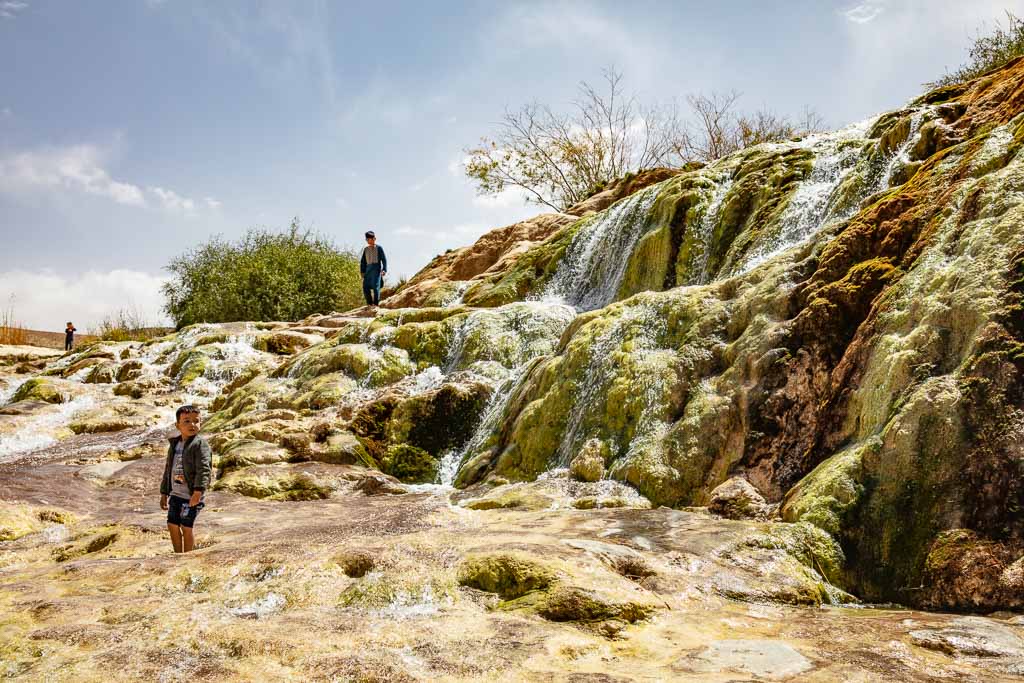

Band e Haibat
Band e Haibat will be the first lake you visit as you explore Band e Amir. The lake surely owes its name ‘Dam of the Grandiose’ to its striking sapphire waters against the orangey-pink Hindu Kush cliffs behind it. As you descend down into Band e Amir you will pass the small village of the area where you can sit down for a cup of chai at a chaikhana or shop the trinkets and jewelry and fabrics being sold by locals.
Don’t miss the Band e Haibat waterfall as you make your way over to the Tomb and paddleboats, where you can watch the sapphire-blues spill over the travertine wall holding the lake up.
At the lake’s shores, you will find a small mausoleum, the Tomb of the Amir. The devout can be found visiting the shrine here and even bathing in the frigid waters as it’s believed to have healing properties.
From this area, you can also rent one of the obnoxiously bright colored swan boats and take a paddle around Band e Haibat. At first glance the swan boats look tacky against the barren rocky landscapes, that is until you get closer and get a sense of the joy it brings to local Afghan vacationers paddling around in the swans. I mean, where else will you see men in turbans giggling like children racing across a gorgeous lake in a country plagued by chaos for as long as Afghanistan has?
Wanna do some hiking in the area? Check out my post on trekking in Bamyan for ideas


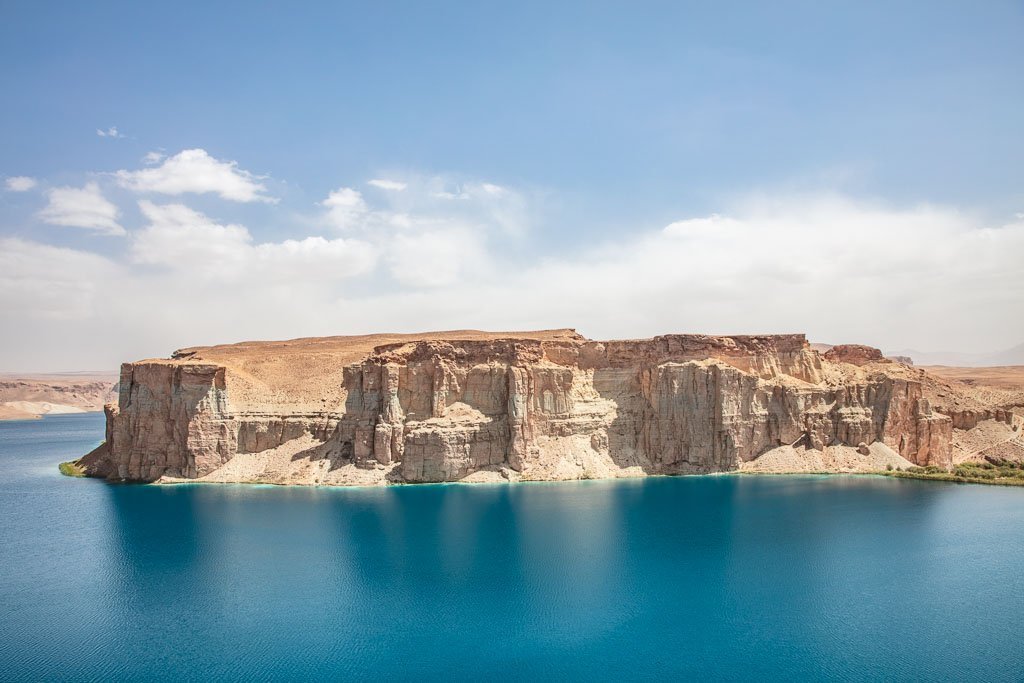
Band e Zulfiqar
Band e Zulfiqar will be the first lake you lay eyes on as you make your way down the dusty road into Band e Amir National Park. An ongoing project to build a stone trail from the cliffs above down to the shores of Band e Amir’s largest lake is in the works.
For the time being it’s partially complete, and you can still get down to the shores by trail. Zulfiqar gained its name from Ali’s trusty sword. The one he used along with the paneer and boulders to dam off the Balkh River, as well as in the story of Dara e Ajdahar– the dragon that tortured the local people of Bamyan.
Keep going west: visit far west Bamyan’s Chehelburj
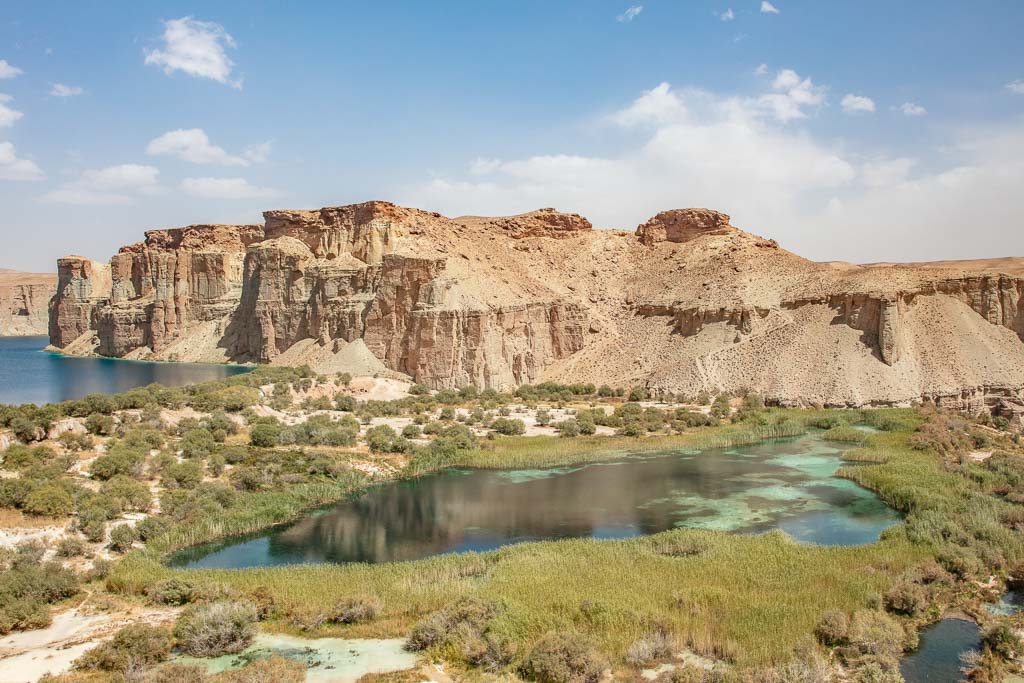
Band e Pudina
Sandwiched neatly and surrounded by wild greens is Band e Pudina, squeezed between the likes of Band e Zulfiqar, Band e Haibat and Band e Paneer. Band e Pudina is named after the wild mint herb that surrounds the lake.

Band e Paneer
Aptly named for its white-washed shores, looking much like paneer or cheese for us English speakers. Paneer was somehow involved in the creation of the Band e Amir Lakes (although no one has been able to tell me how exactly cheese got involved).
Read: Caught in an Electric Storm on Koh e Mekh
The Heart Of The Hazarajat
Band e Amir sits at the beating heart of the Hazarajat, the Central Highlands of Afghanistan along the Koh e Baba Mountains and home to Afghanistan’s ethnic Hazara people. The Hazarajat includes much of Bamyan, Ghor, and Daykundi Provinces as well as large swaths of Parwan, Ghazni, Wardak, and Urozgan Provinces.
The Hazara make up the third largest ethnic group in Afghanistan behind Pashtuns and Tajiks. They are predominately Twelver adherents to the Shia sect of Islam, though some belong to the Ismaili branch (Ismailism is common in the Pamir Region of Tajikistan, the Afghan Wakhan Corridor, and in the Gilgit region of Northern Pakistan. Sadly, the Hazara people have long suffered severe oppression and even genocide at the hands of the Taliban.
Don’t miss nearby Dara e Ajdahar, the Dragon Valley
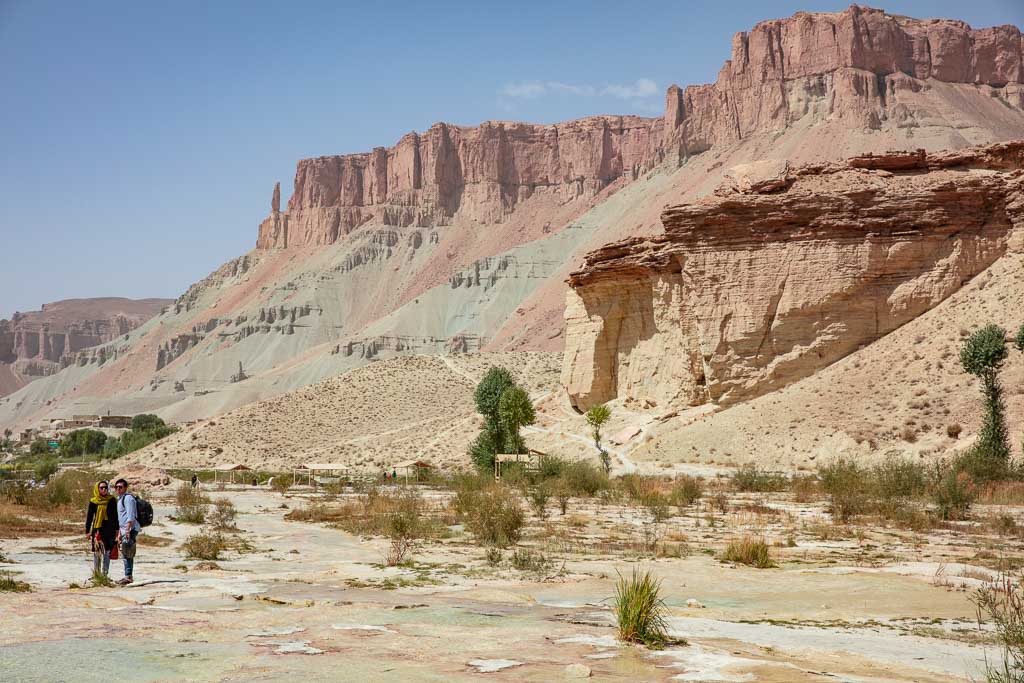
Band e Amir: An Afghan Vacation Hot Spot
Despite being racked by decades of bloody war, many of the people of Afghanistan still carry out seemingly normal lives– including vacationing for many families that are well-off enough or manage to pull together the funds to do so. Band e Amir National Park will see about 6,000 domestic visitors each year, give or take.
Surprisingly we met several families and people taking off for vacations while traveling in Afghanistan, including a lovely Kabuli family we met at Shahr e Gholghola in Bamyan, many holidaymakers at the shores of Band e Amir, and the adorable woman we met at the Kabul Airport that was on our flight to Herat to visit her sister she hadn’t seen in many years.

How To Get To Band e Amir National Park
First off, you’ll need a visa to enter Afghanistan. They can be difficult to get as many consulates, even many in Central Asia do not want to issue them anymore. I’ve had easy dealings getting visas issued at the consulate in Khorog, Tajikistan (yes, even as a solo female without a man in sight) and at the Washington DC Consulate (mail-in).
Learn How To Get An Afghan Visa
Reaching Band e Amir these days doesn’t come without risk, especially now that your only way of getting here is by road. In early 2018 an attack on the Intercontinental Hotel in Kabul carried out by the Taliban killed 9 pilot and crew members of Kam Air, causing a subsequent departure of about 50 of the company’s foreign employees, forcing Kam Air to scale back operations and cut routes, Bamyan being one of them.

Getting To Bamyan
The route via Ghorband (through Parwan Province) to Bamyan is relatively safe by Afghan standards, though there are areas especially near the village of Siyahgird where the Taliban operates very near to. The road from Kabul to Bamyan via this route is actually quite good, being freshly paved much of the way by a Korean construction company.
The same cannot be said if making the journey via the Salang Pass from Mazar e Sharif, the road over the pass is in wretched conditions (trust me, I’ve seen some bad roads and this is the worst I’ve seen).
I highly recommend hiring an experienced and knowledgeable guide to make the journey to Bamyan given the situation right now. From our amazing experience traveling here with Noor & Sakhi of Let’s Be Friend’s Afghanistan, I 100% recommend them.
The road via Wardak Province from Kabul is still a no-go due to Taliban control of the road crossing through Wardak.
There are shared vans that depart Kabul in early mornings for 400 AFS to Bamyan but are not recommended at this time.
When flights do resume from Kabul to Bamyan, you can expect to pay around $110 for a one-way ticket.
Start planning: The Bamyan Travel Guide
Getting To Band e Amir
The journey to Band e Amir will take about an hour each way from Bamyan Bazaar. Hiring a taxi for the day to take you to the lakes will set you back about 1,500 AFS. It is possible to catch a shared taxi to Band e Amir from the Bamyan Bazaar for 250 AFS each way.
There is a 200 AFS entrance fee payable in cash at the gate upon entering the National Park.
Where To Sleep
It is possible to camp at Band e Amir if you’ve brought your own tent, however many locals will warn you against it after foreigners were kidnapped here several years ago. Dir Chaikhana near Band e Haibat will let you curl up and sleep on their floor for 100 AFS per person.
Bamyan will have more comfortable options ranging from sleeping on the floors of chaikhanas to decent hotels.
- Budget: You can sleep at the chaikhanas along the bazaar in Bamyan for about 300-500 AFS/night per person. Note that some do not have toilets and few have showers, so do ask
- Midrange: Caravanserai Hotel $30-40 USD/night, double
- Midrange: Noorband Qala Hotel $40-60 USD/night, double
- Splurge: Silk Road Hotel $100 USD/night, double


Band e Amir In Winter
I was able to return to Band e Amir in winter (March 2019). One day I’ll get around to telling the wild story of what happened here on my second visit, but we woke up to about one meter of fresh snow in the mountains.

Have Any Questions About Visiting Band e Amir?
Ask in the comments section below.


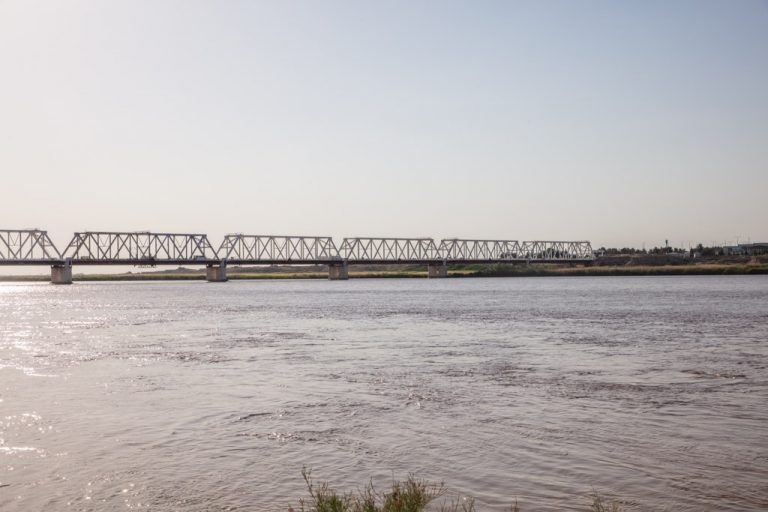
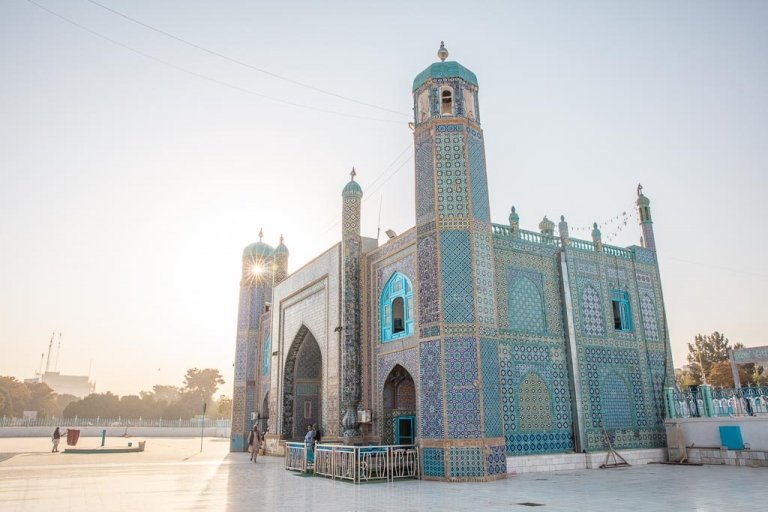
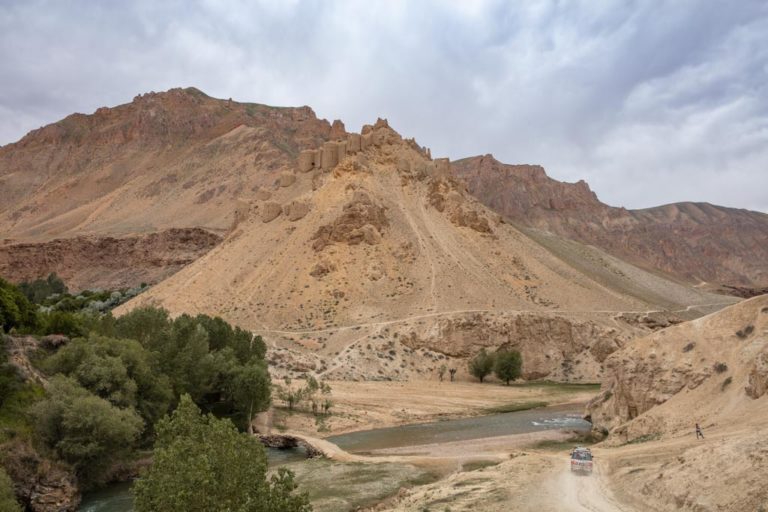
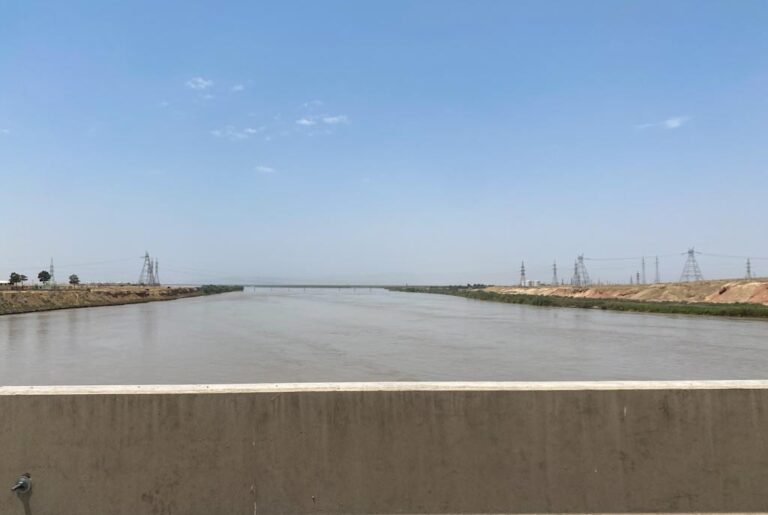


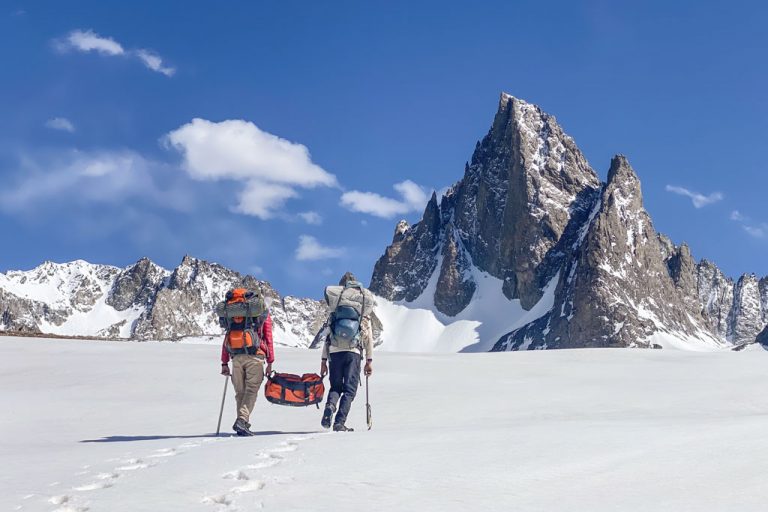
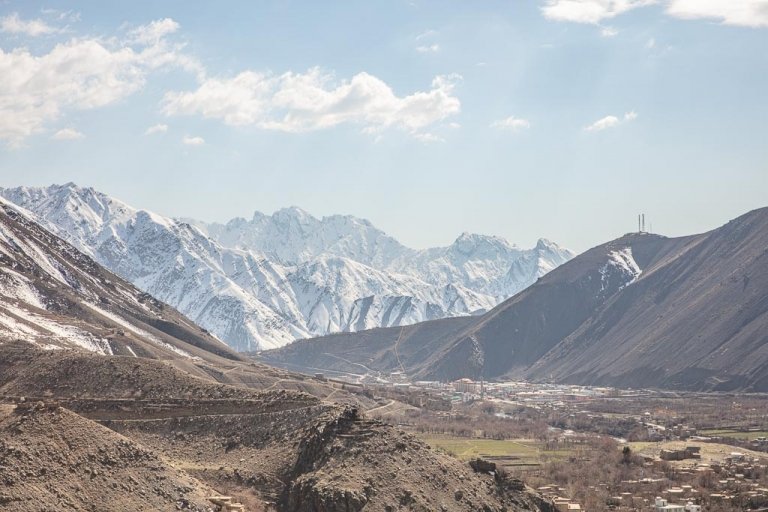


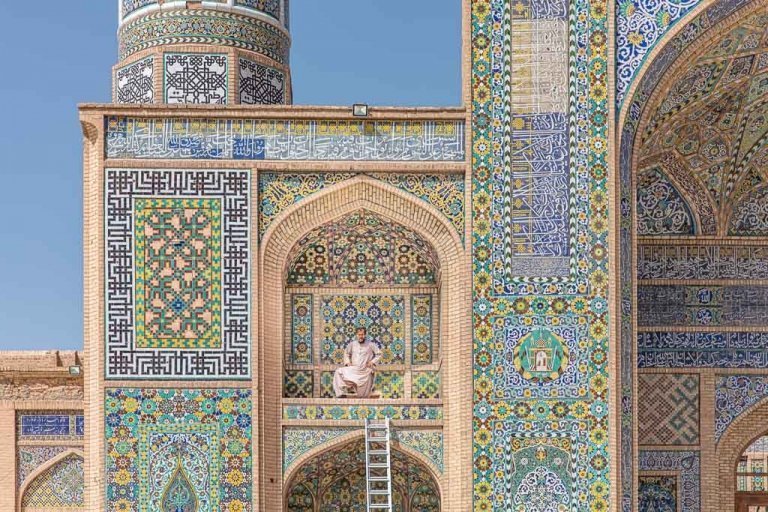


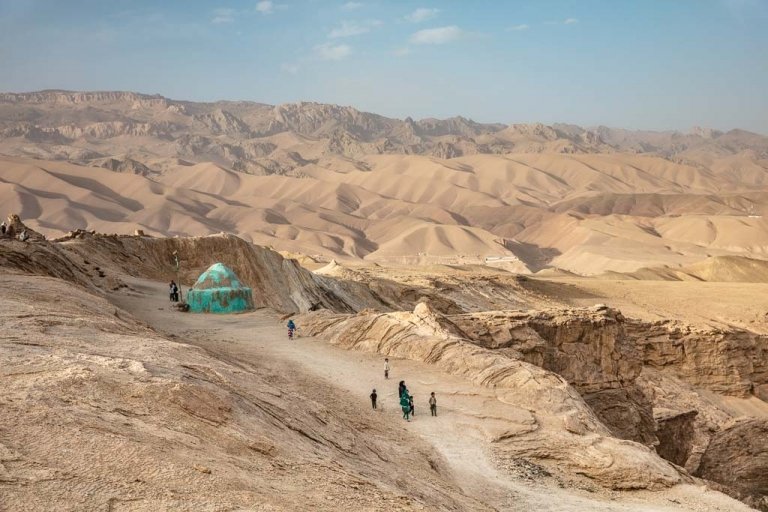

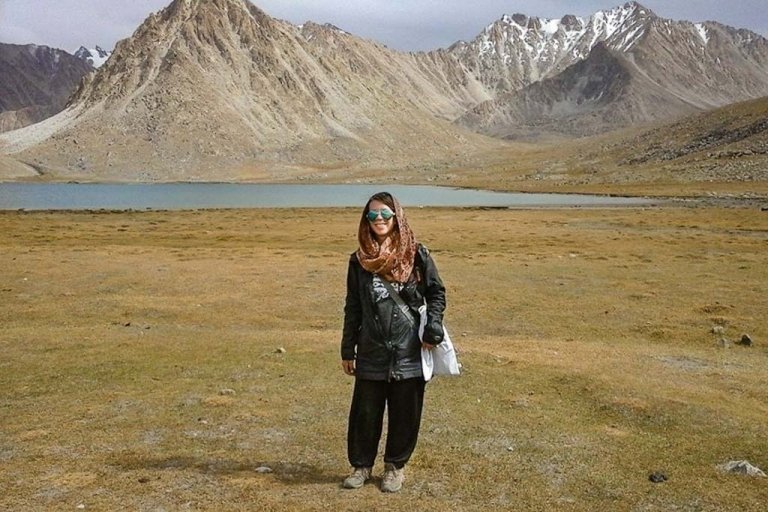
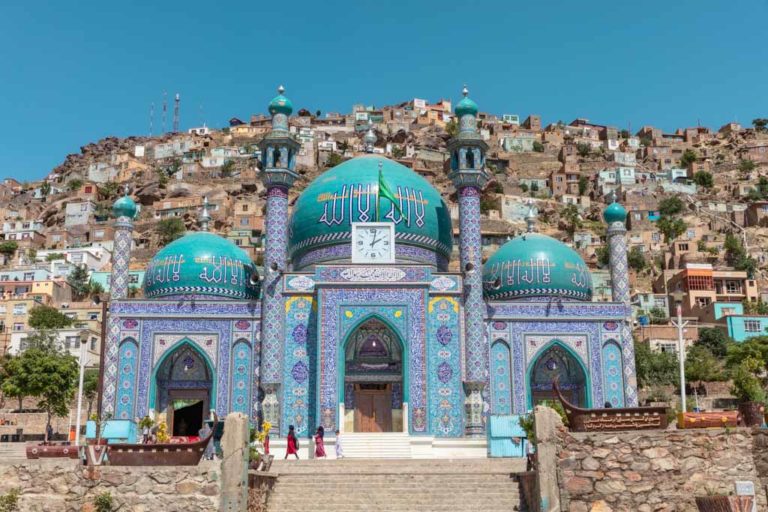

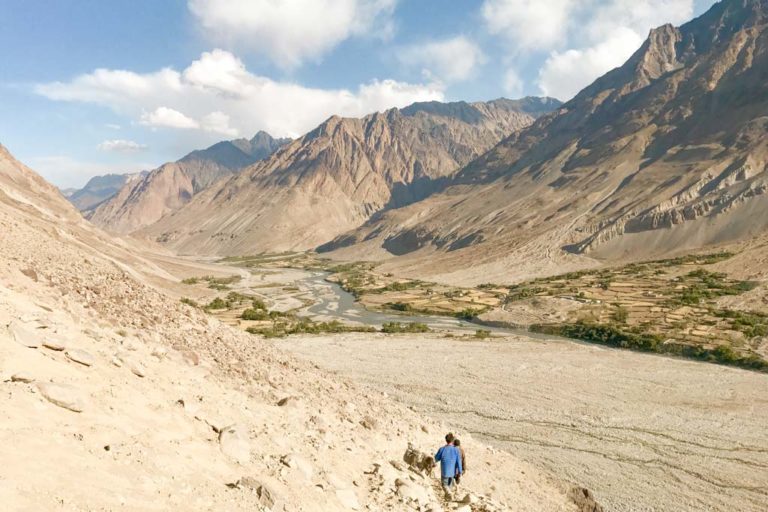
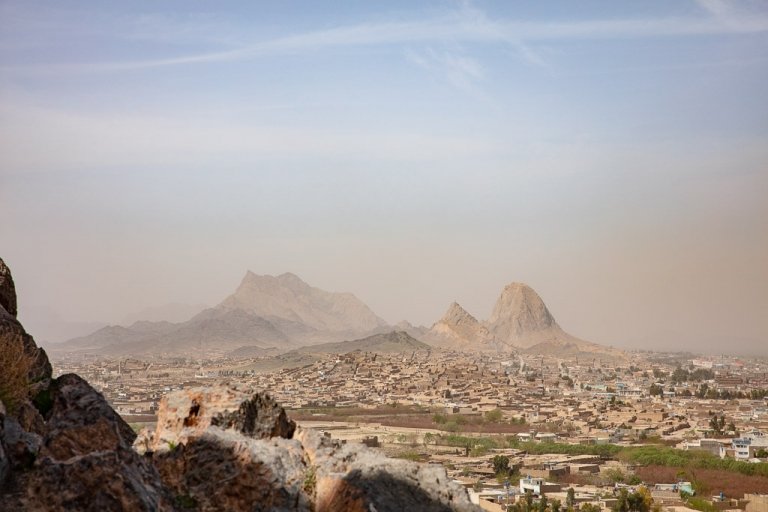
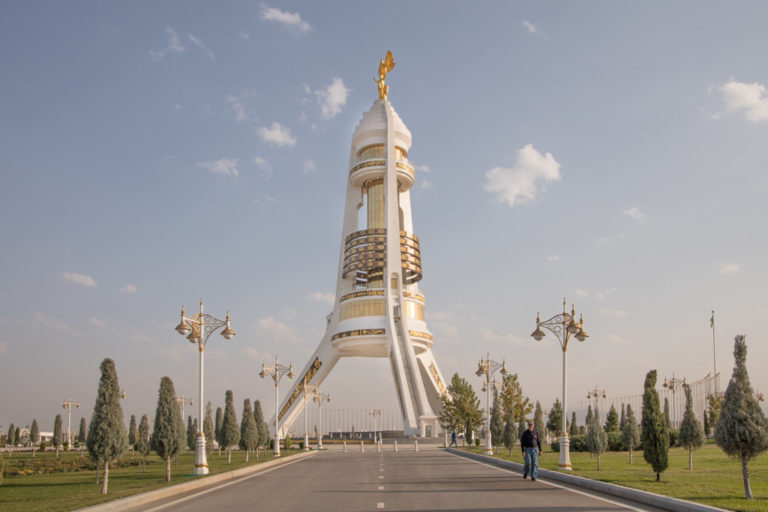
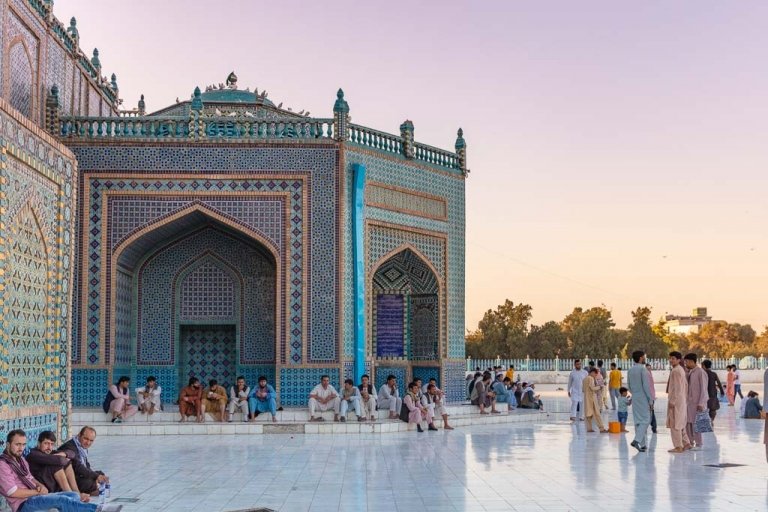

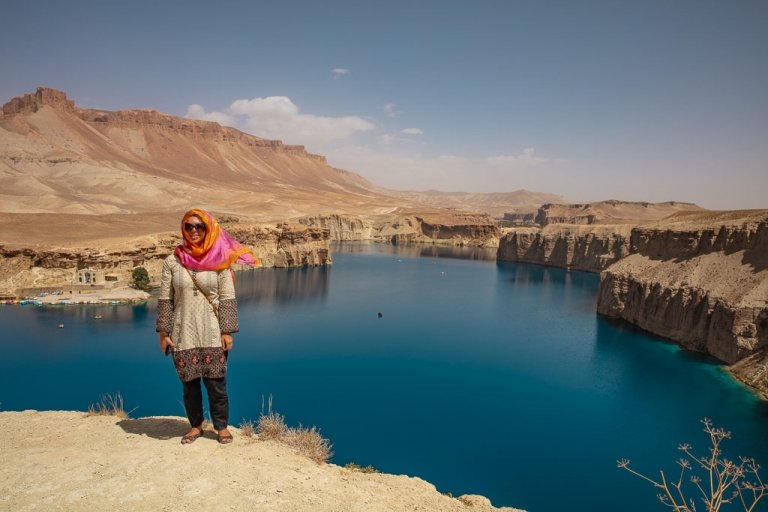
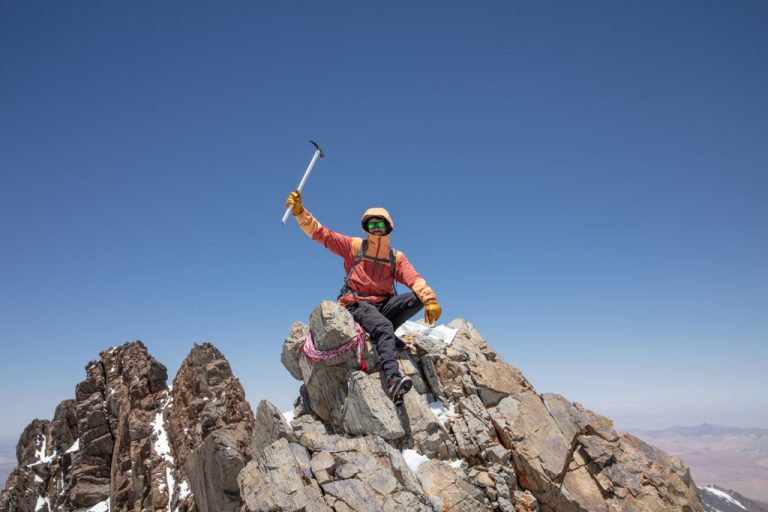
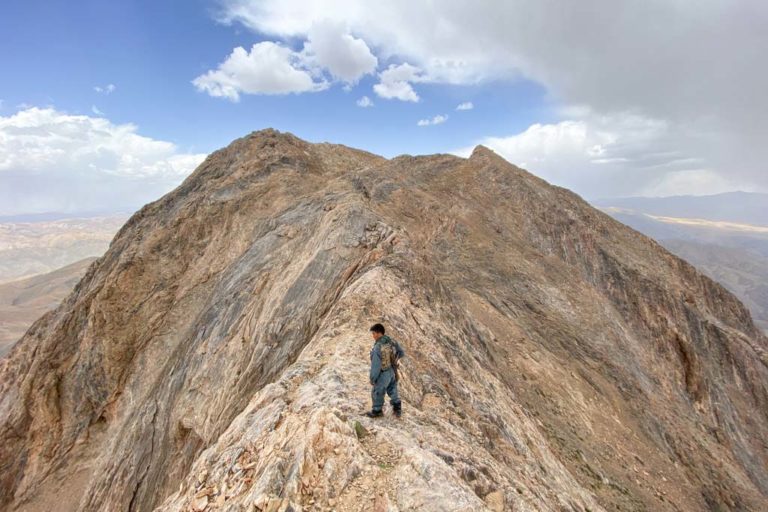


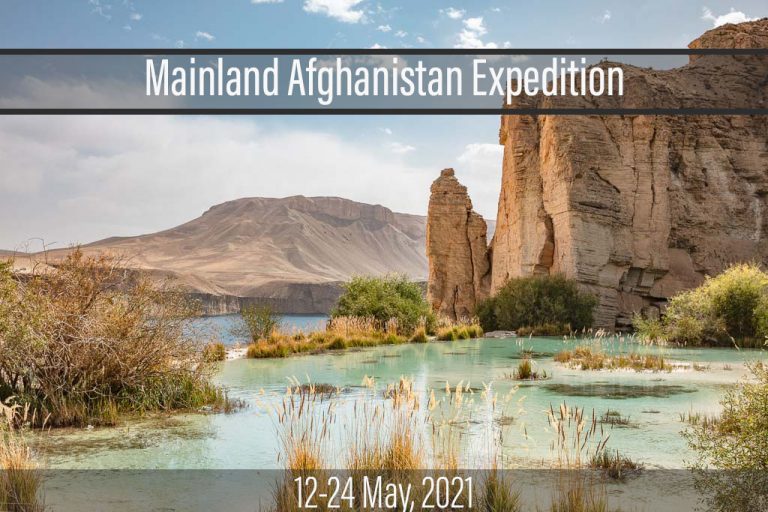

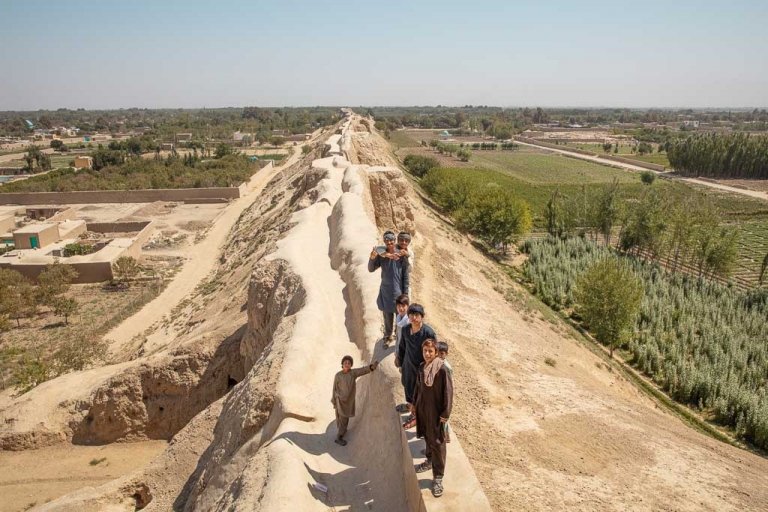
Wow, I had no idea Afghanistan had such stunning scenery like lunar landscapes and lapis lazuli lakes – definitely adding this to my travel bucket list!
Hey Nicole!
Thank you a world for showing us the land I belong to but never had the chance to visit it. I wish you more happiness and success.
Hi Ali, I hope you can one day visit, it’s a beautiful place! Thank you for the comment